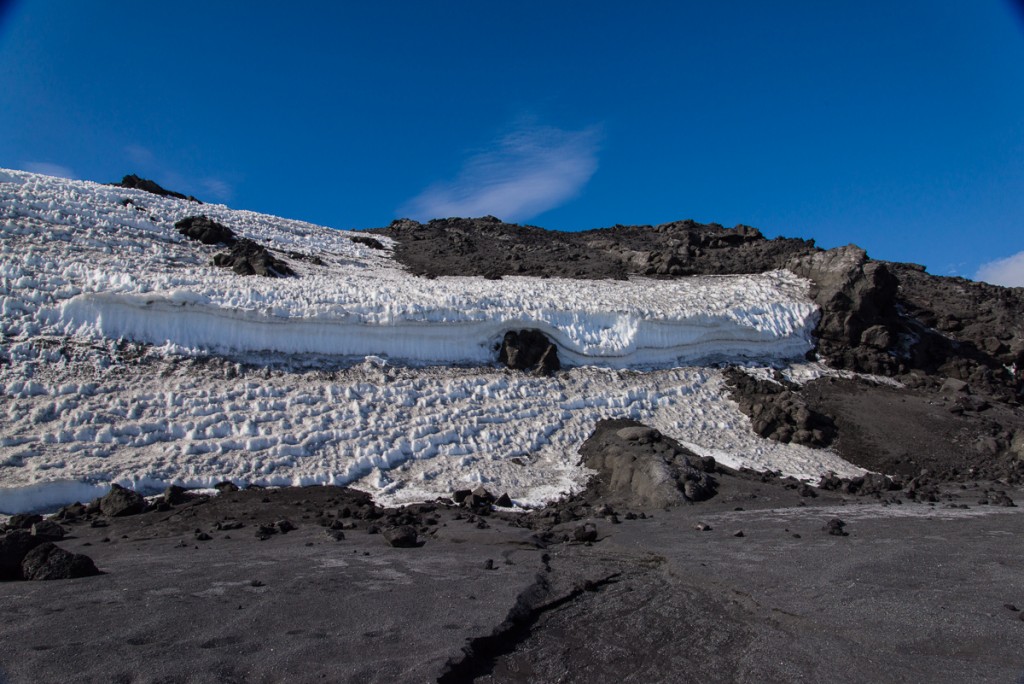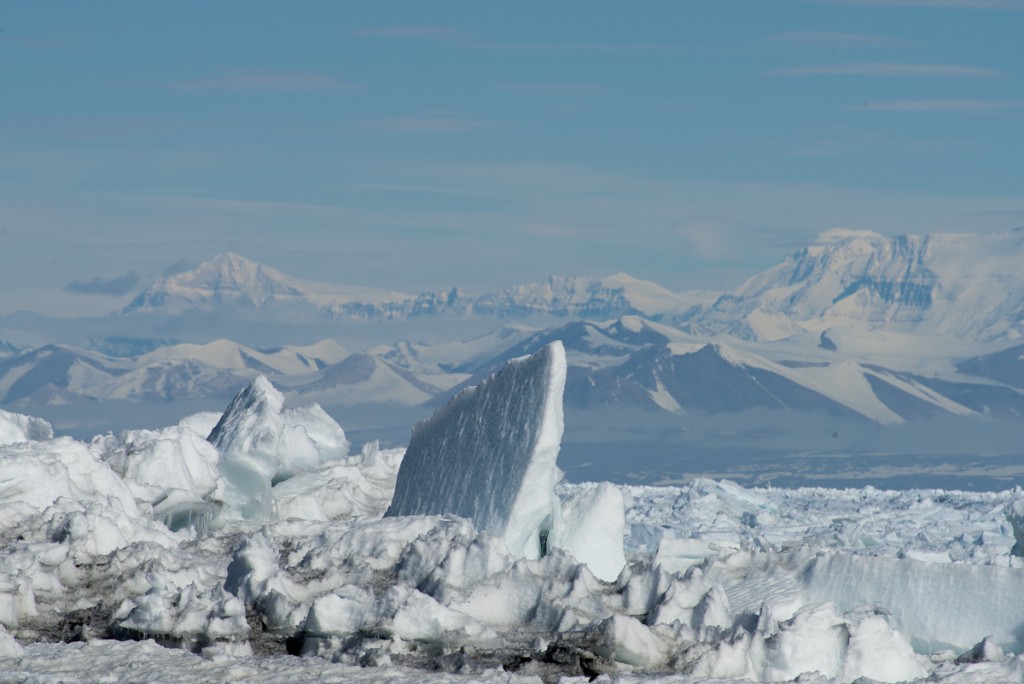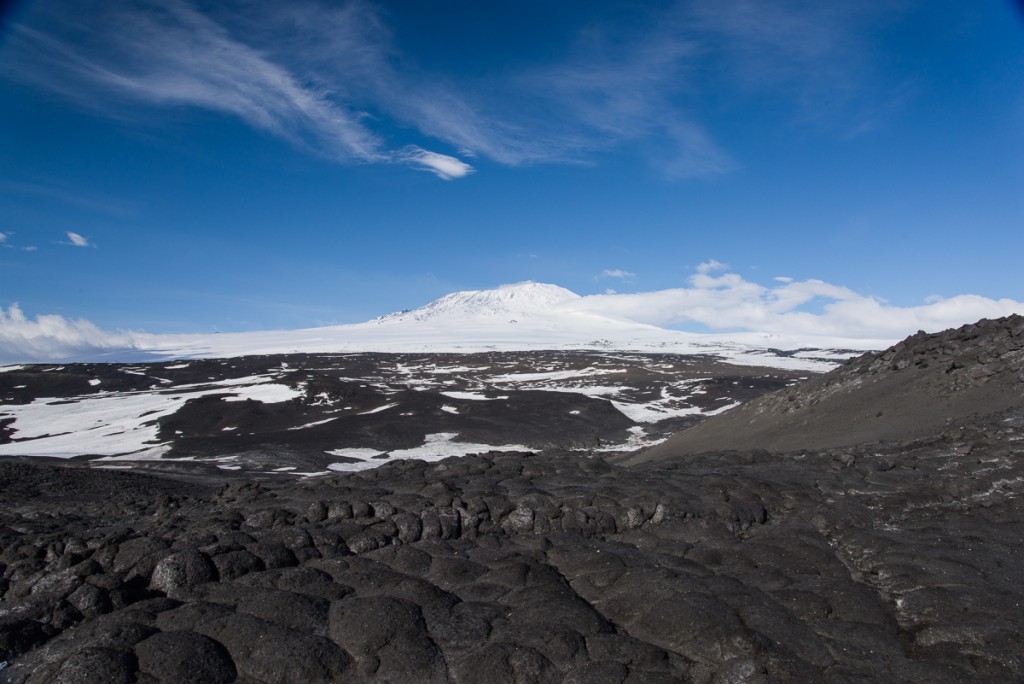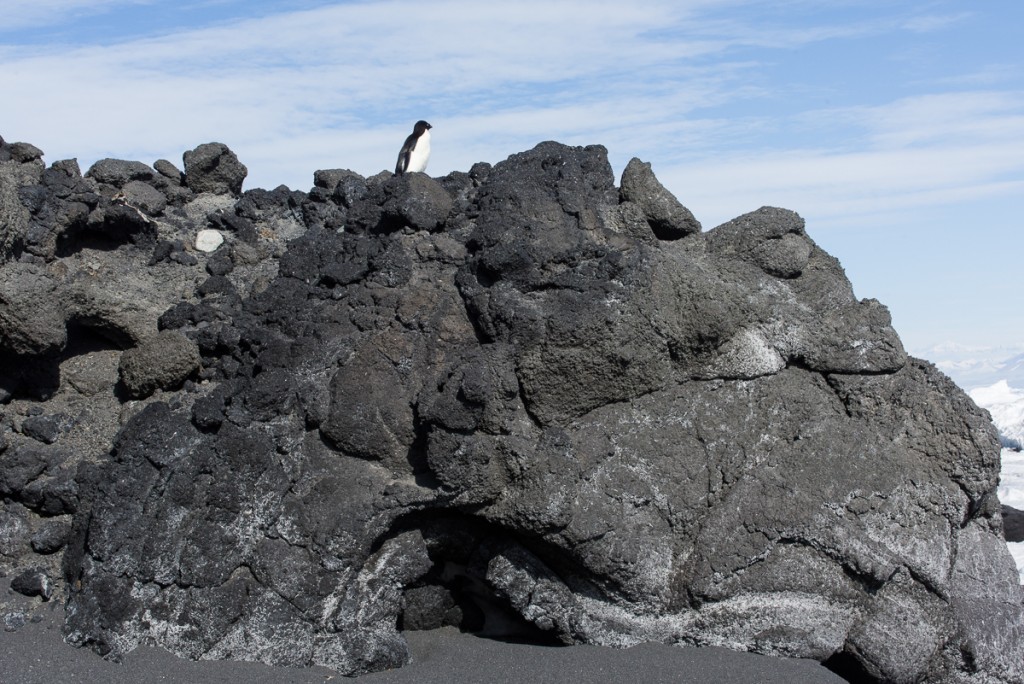
On Dec. 9th, I went via helicopter with Evan Miller (the mountaineer you met in previous blog posts) to the Adelie penguin colony at Cape Royds. At the Royds field camp, you are between Mt. Erebus and the Ross Sea. It’s a short hop via helicopter from McMurdo, about 15 minutes, but a completely different landscape. For one thing, McMurdo is still iced in with a thick layer of sea ice but Royds is beyond the sea ice edge, so there’s open water (which is typical for this time of year, though the sea ice broke out here before mid-November, which is on the early side). Erebus still looms in the distance, and you have more the feeling of being on the lower slopes of a volcano, since there are hills covered with black gravel and rounded stone formations they call volcanic pillows. The “pillows” have rounded protrusions so uniform in size it looks like an archaeological site where some ancient civilization had built stone walls by piling stones, but of course that’s not the case at all. Some of the structures that look like a wall made of a pile of stones are in face, one big rock.

Evan was sent to accompany me for the first 24 hours to explore the site so I knew where I could orient myself so I could walk safely on my own for the rest of my stay. So on that very windy afternoon when we arrived, after lunch we set off on a walk toward the small lakes to the north and then looped back along a ridge that overlooks the coastline. The penguin colony itself we decided to save for the next day, since that’s terrain that I would not need the know-how of an experienced mountaineer to explore.
Right now there are two women working here, field camp manager and outreach educator Jean Pennycook and wildlife biologist Katie Dugger. Katie is leaving in the next few days, and her colleague David Ainley, the scientist who established this study, will take over her daily monitoring of the penguins. Jean makes sure the camp is supplied and is busy with outreach activities, making Skype calls to classrooms all over the world from the colony via her iPad, communicating with schoolteachers and updating the Cape Royds penguin project’s fabulous web site at penguinscience.com, which I highly recommend if you have any interest in learning more about penguins. There is information there for any level of education, from kindergarten to college. If you have kids, show them the site and tell their teacher about it! You’re probably saying, all right already, enough with the exposition, let’s see some penguins! So, even though this is out of order, here’s a quick peek. I promise more penguins up close and personal in the next post.
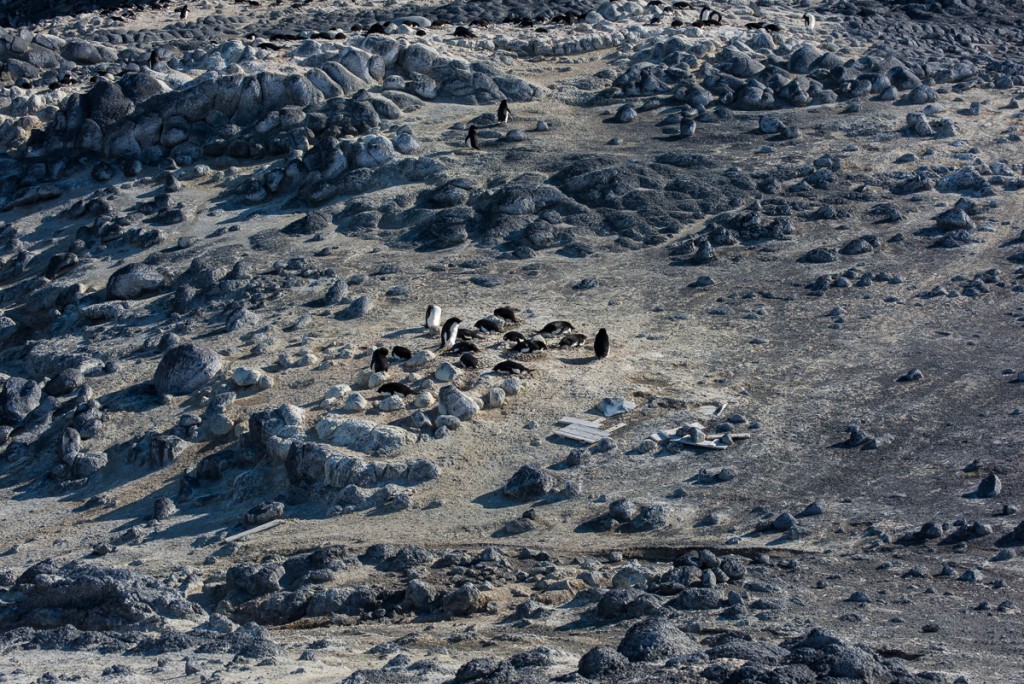
Evan and I found the larger lakes:
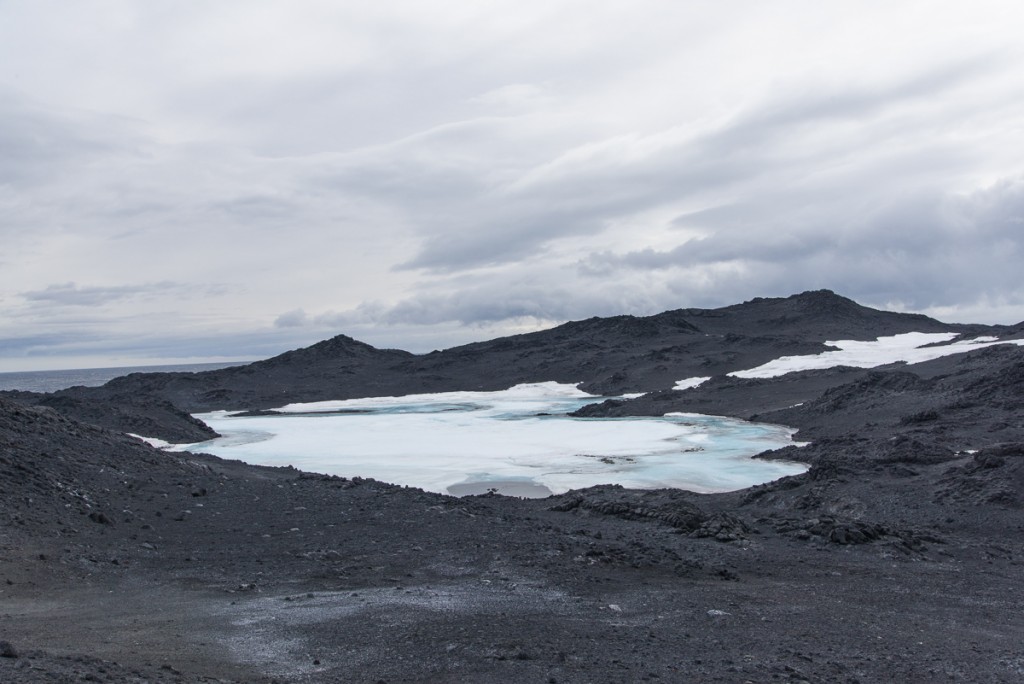
…and smaller ponds:
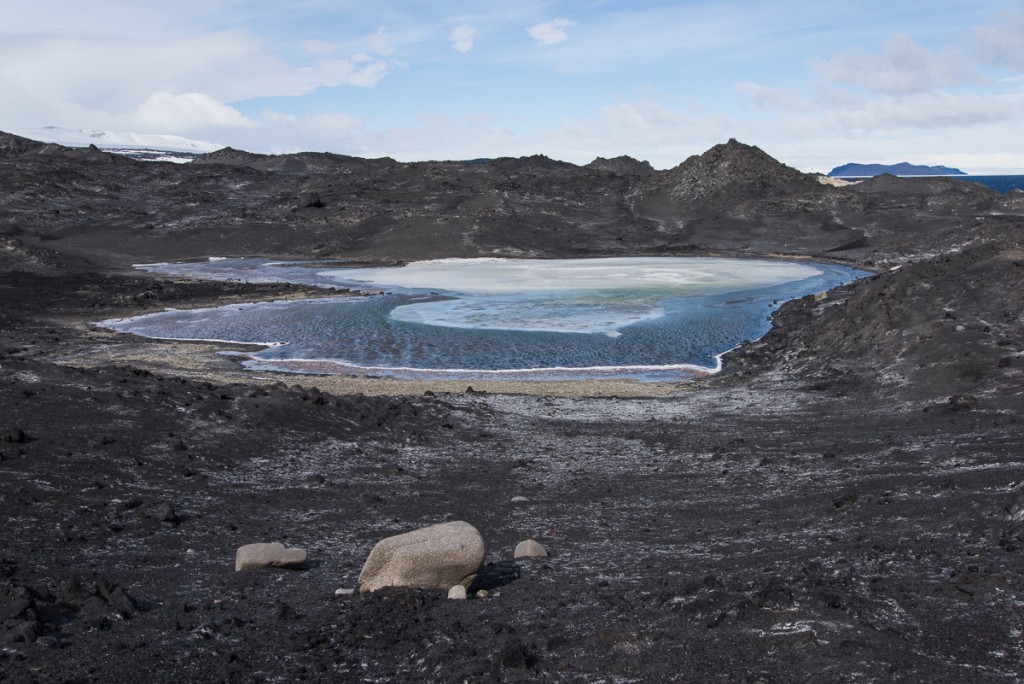
And volcanic rocks worn by the wind, called ventifacts:
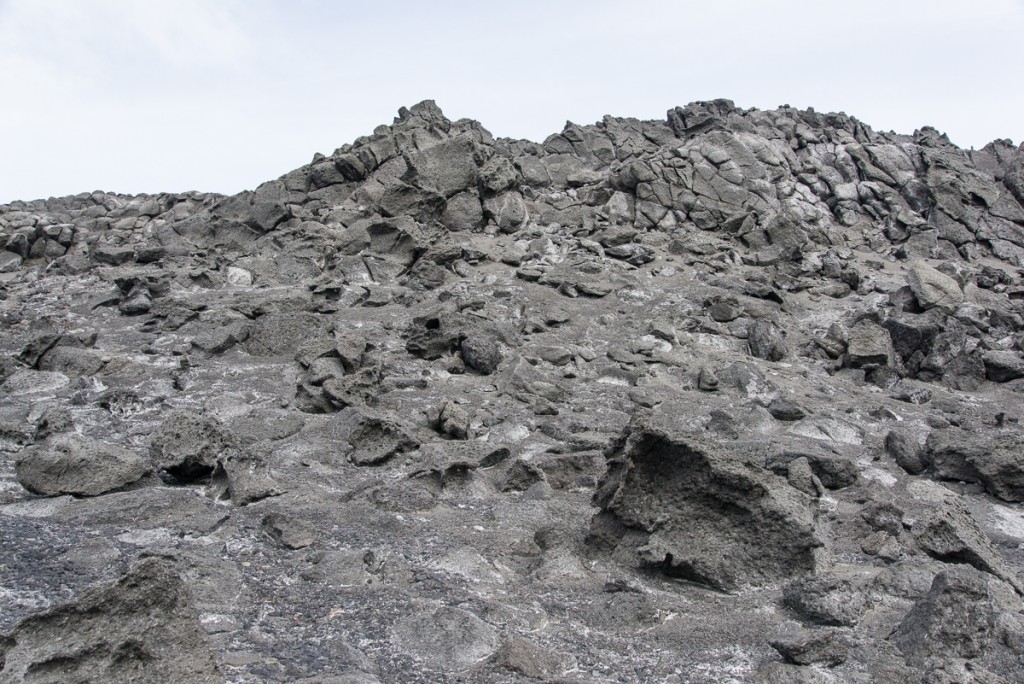
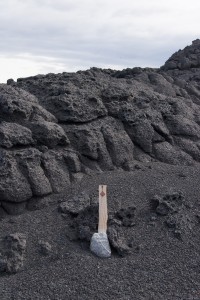
As we walked, Evan and I happened upon a nesting skua, sitting on an egg. She hyah-hyah-hyahed at us to warn us off for a while, and then stepped off the nest and took a few steps toward us as if to say, “Hey, I mean it, get the hell out!” So we made a big circle and ended up at a distance from the other side of the nest. Evidently that was good enough for her, and she walked back to her nest and settled back in, but we got a quick glimpse of the egg (photos below).
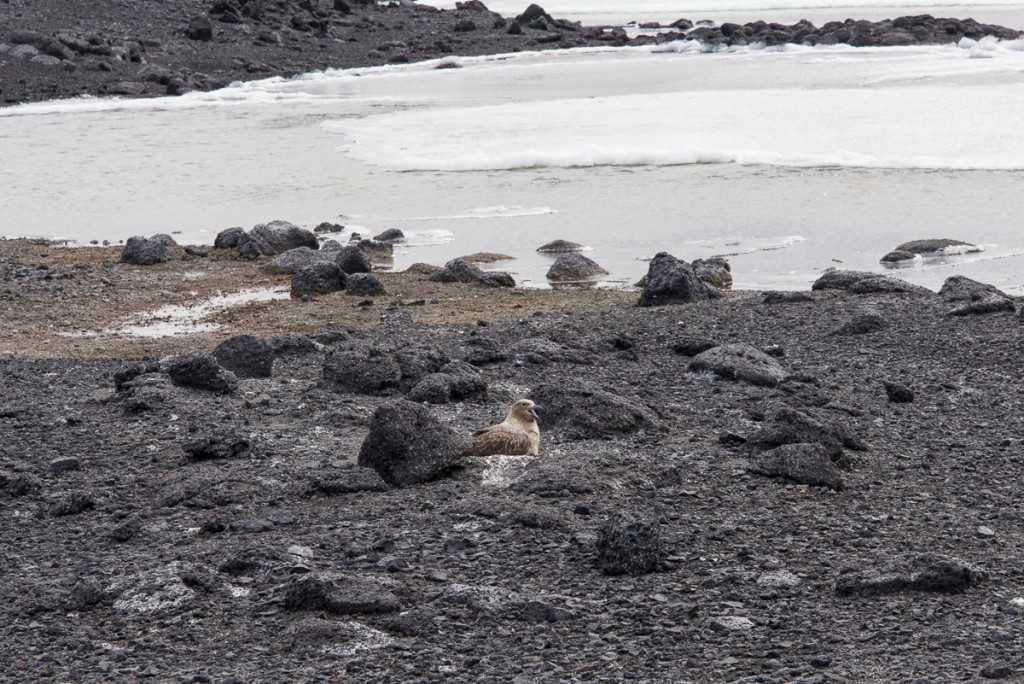
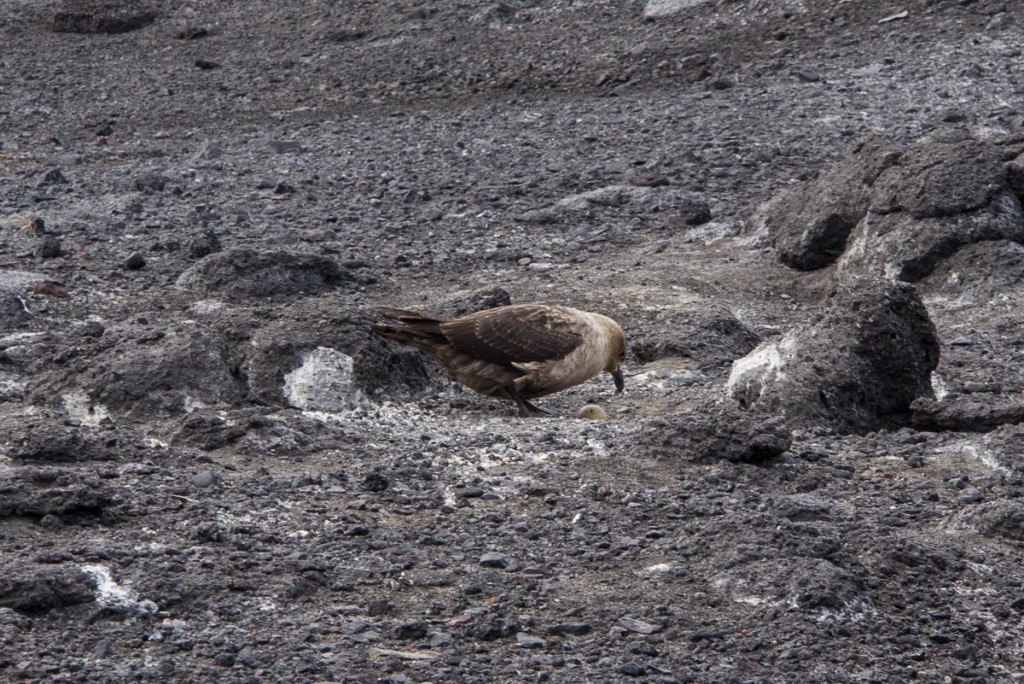
We had, it turns out, inadvertently walked into a major skua nesting area. We kept seeing nesting pairs. Most either ignored us or squawked a little as we walked by but suddenly Evan was being dive bombed by a skua, who kept swooping down within a few feet of his head. Why it went after him and not me, who knows? Maybe because he was taller? But we walked faster and got out of there.
Coming over the ridge we saw the sea. The open water was a contrast to the unending vista of flat sea ice from McMurdo:
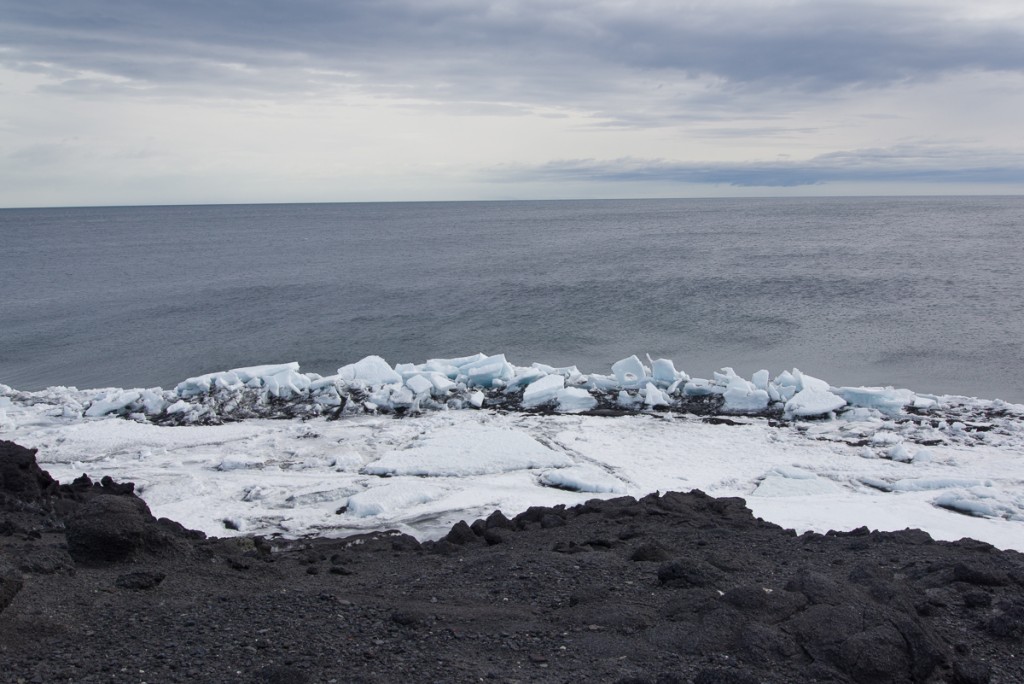
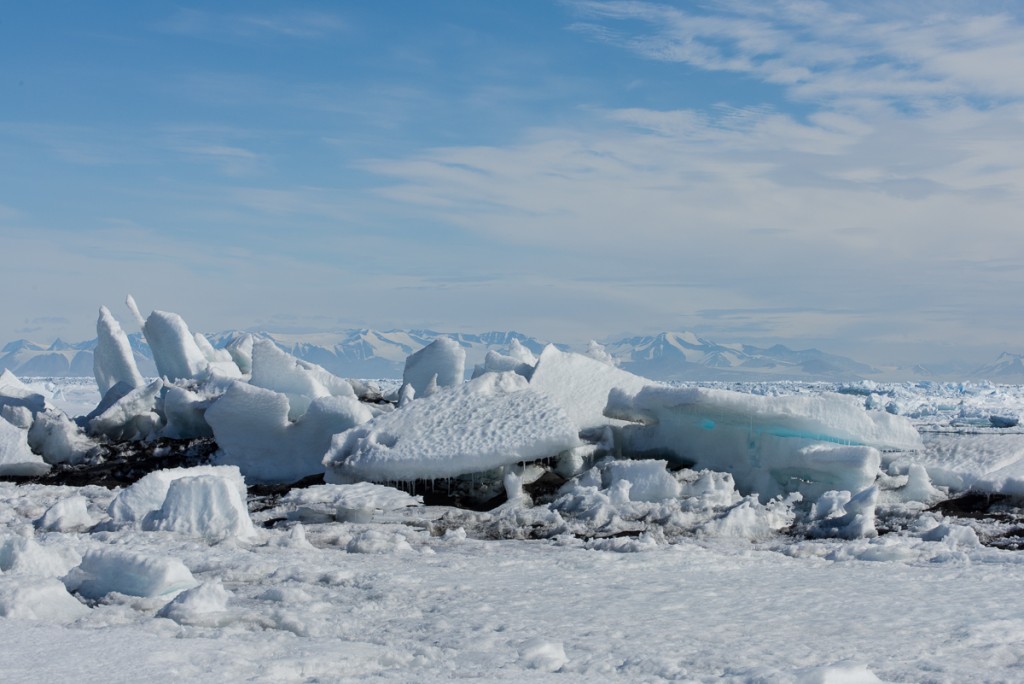
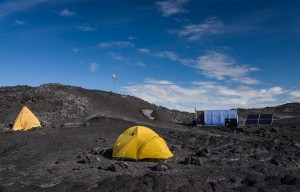
The winds were blowing stiffly from the south all day. We kept waiting for them to calm down in order to set up my tent, but that wasn’t happening. So I got a one-on-one lesson from a certified National Outdoor Leadership instructor on best practices for setting it up in the wind.
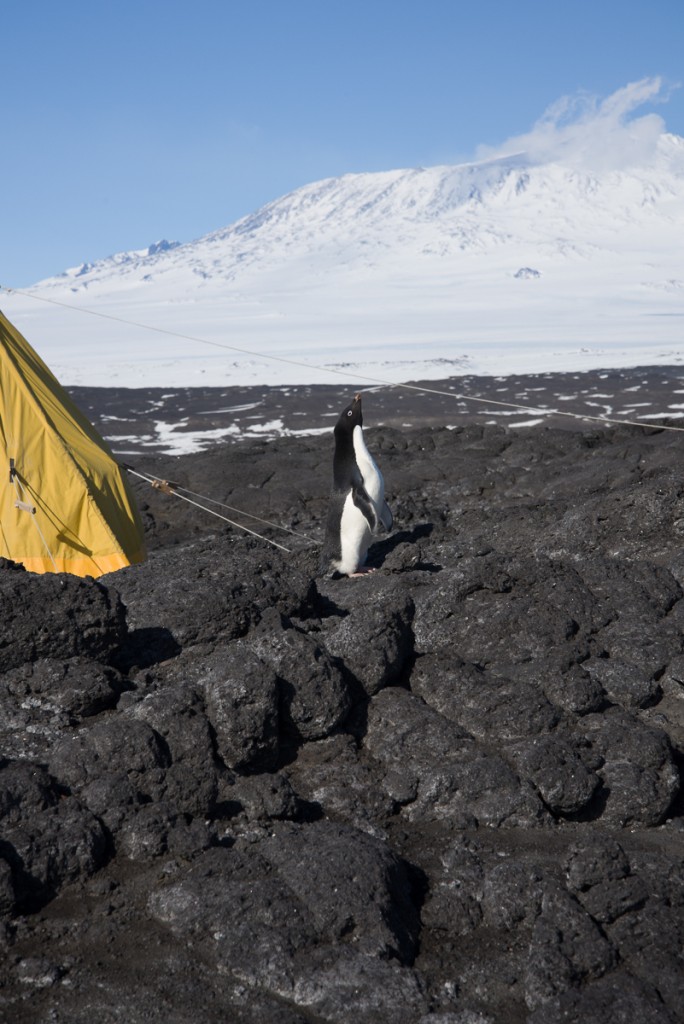
However, Katie assured us that the forecast called for the winds to die down and shift direction after midnight. The next day we were surprised to see that indeed they had, and the sound had filled with sea ice blown in by the winds coming from the north. Giant slabs of ice were moving briskly along.
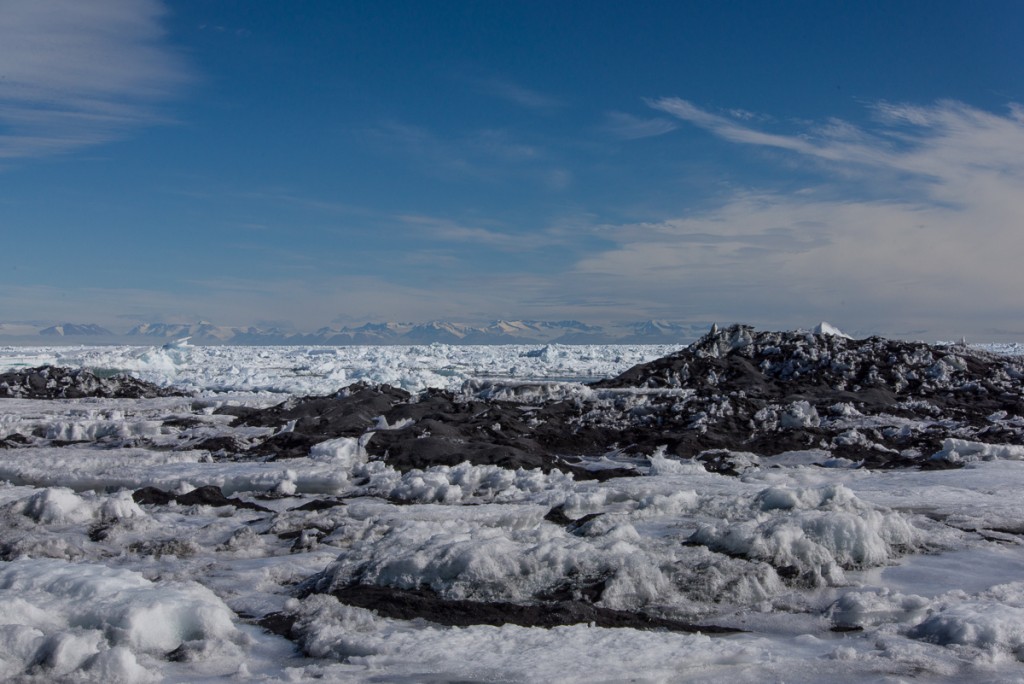
Earlier on the second day that we were here, when the above photo was taken, I also took one looking south. It was a nice sunny day and you could see the sea ice edge, and the very same iceberg I photographed on the excursion several days ago that I spoke about in an earlier post:
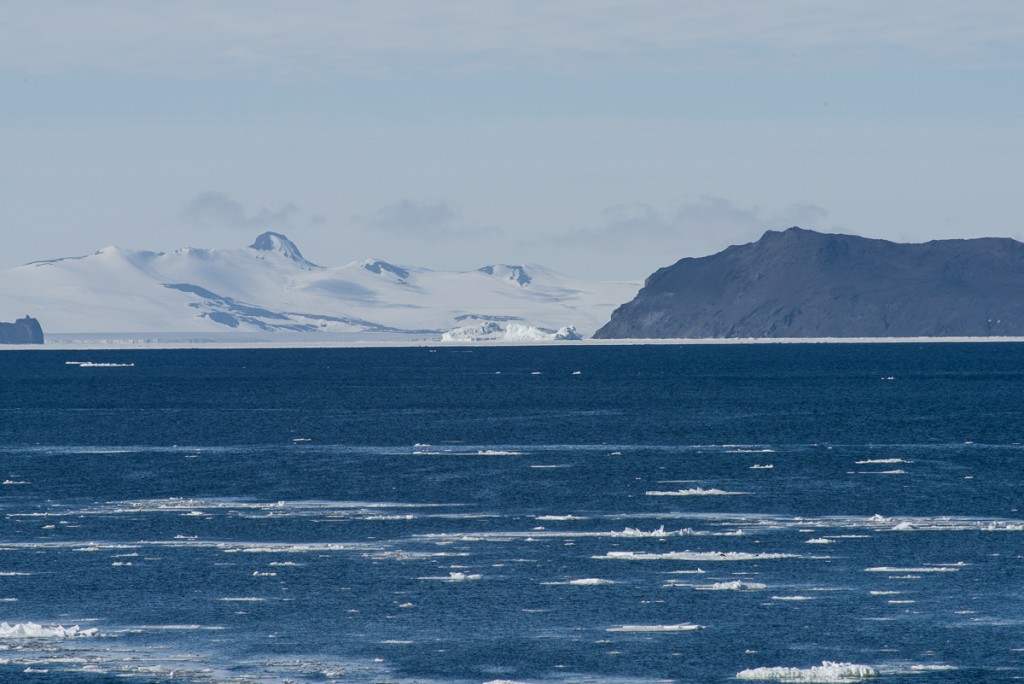
On that second day’s walk, we also walked down the steep slope to a black sand beach. We encountered the lone penguin you see in the first picture in this blog post. Walking along the beach are interesting snow and ice formations, big and small. I’ll end this post with a couple more:
